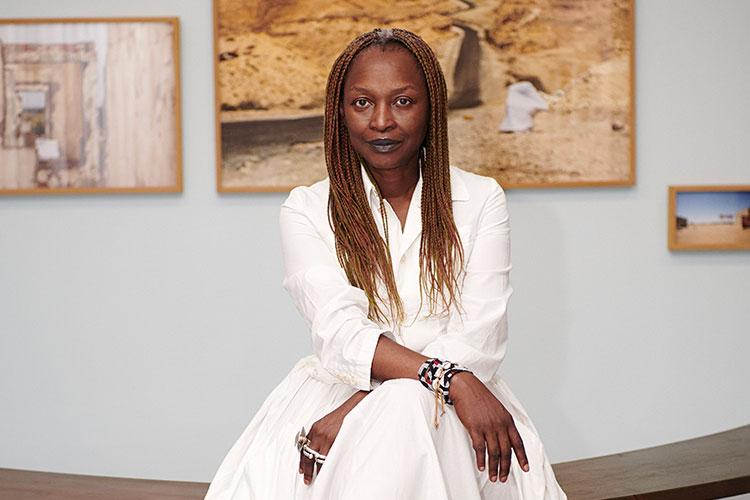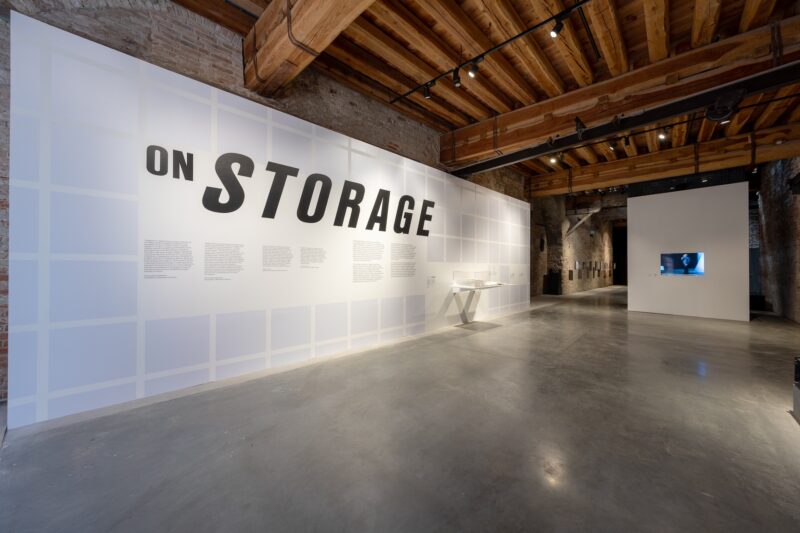Korean artist Chun Kwang Young comes to Venice with a solo show at Palazzo Contarini Polignac. Times Reimagined, an Official Collateral Event of the 59th International Art Biennale, is curated by Yongwoo Lee, founder of the Gwangju Biennale (among others). It is organised by Museum ground and Interart Channel in Seoul, Korea. Accompanying the exhibition, a new architecture by Stefano Boeri Architetti will welcome people in the gardens of the Palazzo.
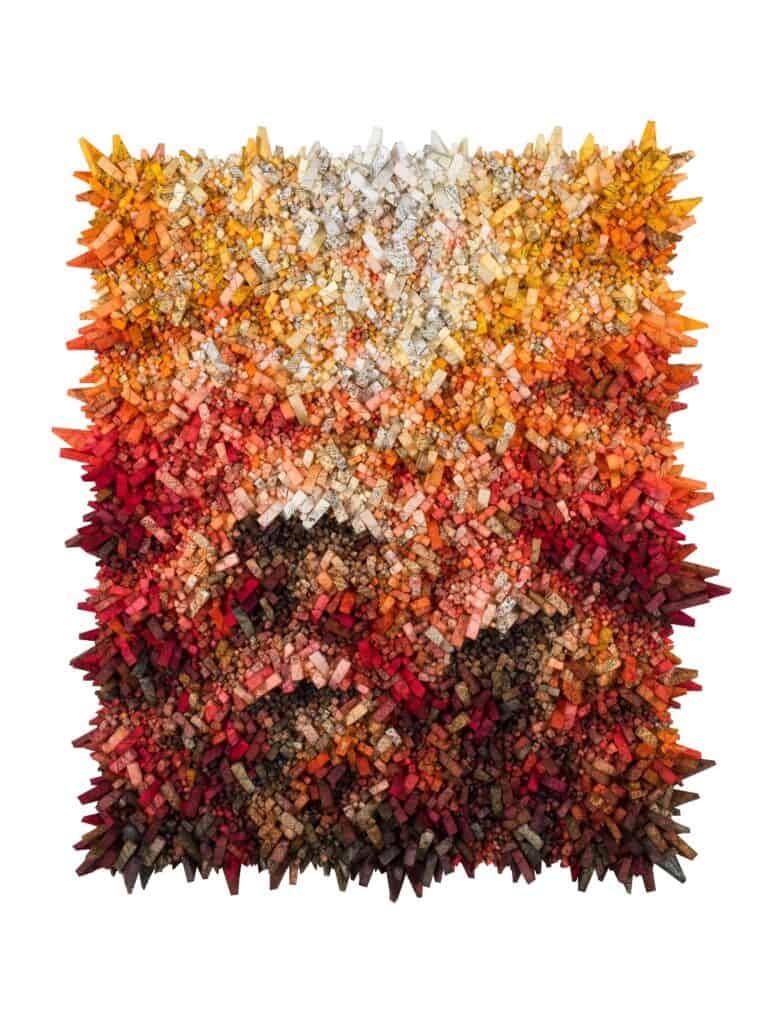
Chun Kwang Young has been working for over 30 years on the theme of interconnectedness. His work explores the relation between living beings and the socio-ecological values of their relationships. This poetic is reflected in the medium that the artist keeps reworking in his oeuvre: the Hanji. This Korean mulberry paper, which Chun dyes in tea and natural pigments, to then sculpt it in various shapes, has become a symbol of recycling and life cycles. It is also said to last 100 years!
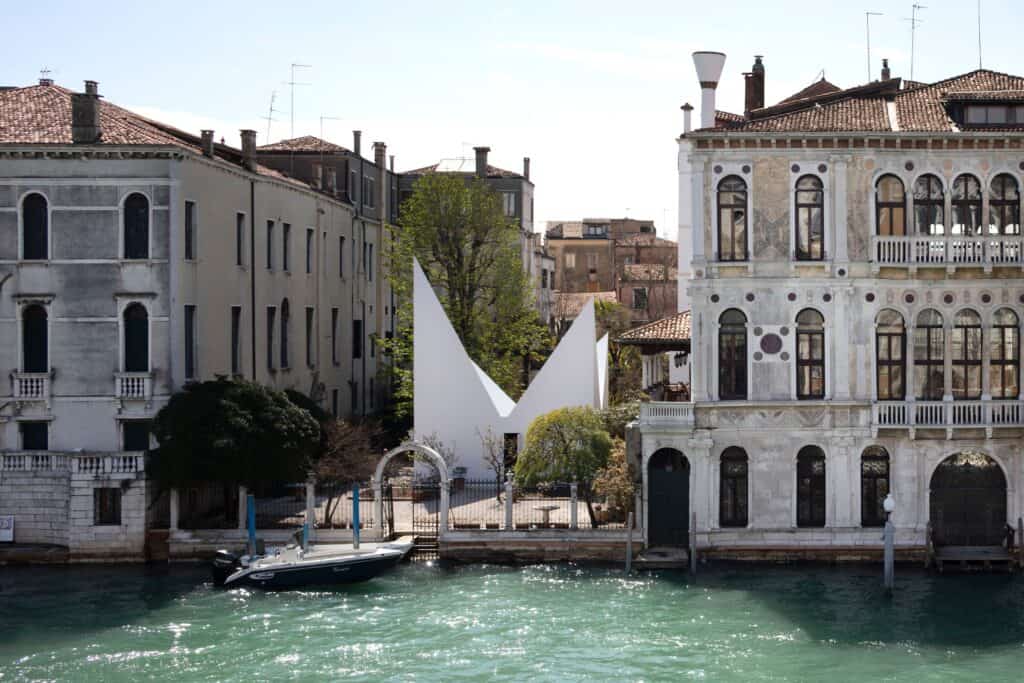
There’s never a specific shape or colour that really defines Chun’s work. Rather, everything revolves around the complex and abstract architectures that he elaborates placing together, in tight compositions, thousands of parcels made of Hanji. These are dyed in different hues and shaped in varying forms, adding many levels to the work. This paper, fragile by definition, becomes, then, a structural element which is reminiscent of crystals, bricks, living creatures, or a crater, even. It turns into an earthly material with a dual power: fragile but persistent, delicate but also durable and structural. Moreover, Chun inserts this delicate element into massive wall-mounted or freestanding assemblages, speaking once more to the tension and unstable balance existing in our ecosystem.
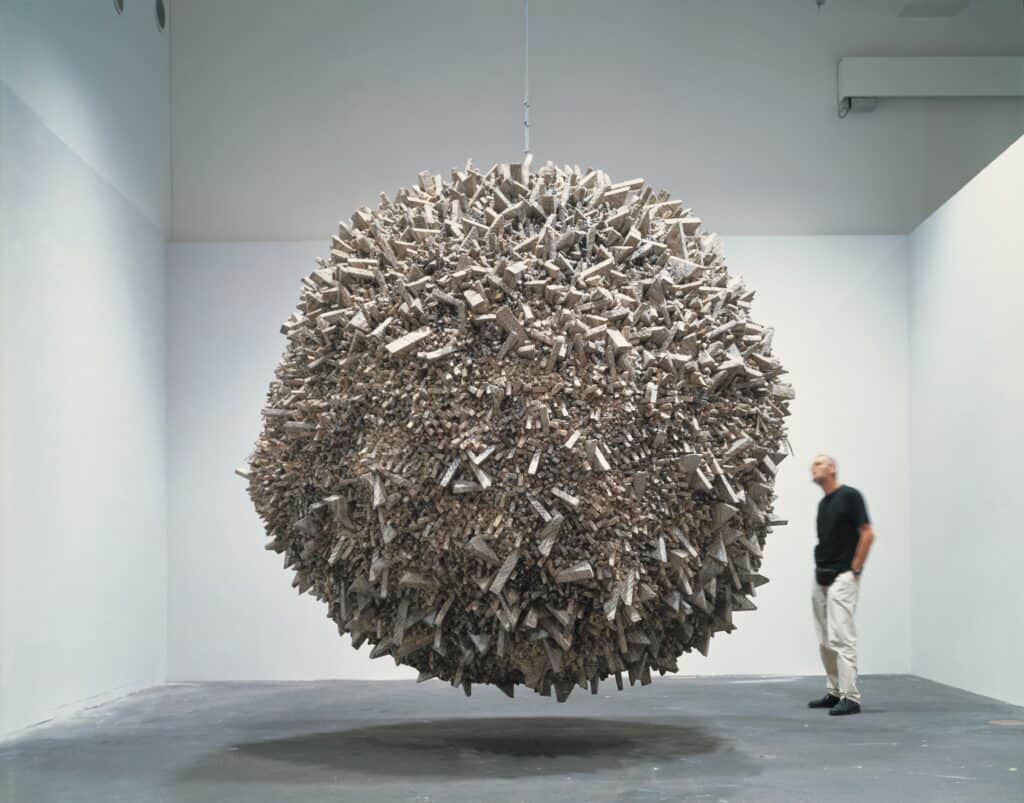
This body of work forms the Aggregation series. It serves as a metaphor for transformation and communion among living beings – a survival strategy to the ecological disaster. In ecology, indeed, interconnectedness is an absolute factor for the reproduction and survival of all species, as well as an essential for ensuring biodiversity and enhancing sustainability in any adverse conditions such as climate change. Furthermore, the type of paper used by Chun is not mass produced, but it’s an handmade product originated from the mulberry tree, embodying a cultural property fermented for several hundreds of years.
Alongside the 40-sculpture reliefs on display, Palazzo Contarini Polignac will host in its garden an outdoor pavilion, overlooking the Grand Canal. Specially commissioned to acclaimed Milanese architect Stefano Boeri, it will create a dialogue with Chun’s work and its poetic. Its shape, made from the combination of simple volumes from which four pyramids stand out, recalls the typical Japanese and Korean houses. These are in fact characterised by basic geometries. It also creates a strong bond with Chun’s materials, linking its concept to ancient East Asian traditions of paper-folding.
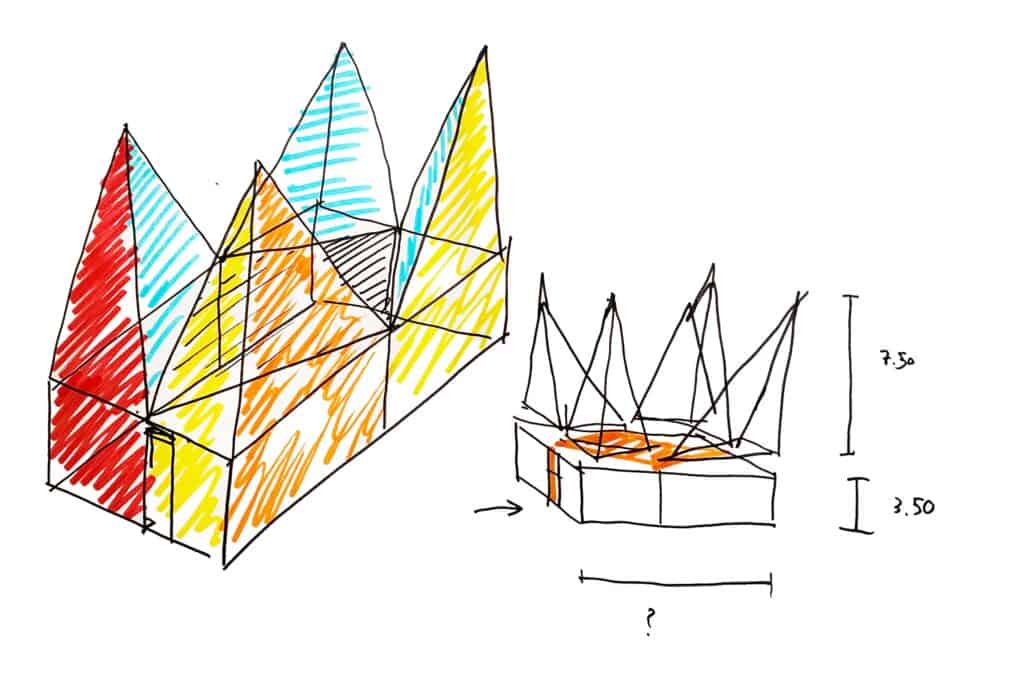
Conceived as a sort of lighthouse, Boeri’s structure draws inspiration in the concept of the ‘paper-tree architecture’. Called Hanji House, it comes as a foldable structure serving as a place for rest, meditation and for hosting various other events. The outdoor self-standing construction is itself a meditative structure, reminiscent of origamis; an endless action of folding and re-folding paper.
To further the discussion centering around Chun Kwang Young: Times Reimagined, an academic forum will be organized on the opening day titled The Art and Built Environment in the Age of Ecological Crisis. Against the backdrop of human experiences of technological diversity, convenience, and utopian illusion of the future, in contrast to the rapid decline of biodiversity and staggering ecological imbalance, biologist, philosopher, artists, architect, activist, critics, and curators will be gathered to propose constructive plans to respond to the current situations. Speakers are Stefano Boeri, Choe Jaechun, Otobong Nkanga, Sam Bardaouil, Li Xiangning, Andrew Brewerton, Lucia Pietroiusti, Jean-Marie Gallais, Yuk Hui.

Chun Kwang Young: Times Reimagined, 23 April – 27 November, 2022, Palazzo Contarini Polignac, Dorsoduro 874, Venice
Collateral Event of the 59th International Art Exhibition La Biennale di Venezia
Curator: Yongwoo Lee
Curatorial Adviser: Manuela Lucà-Dazio
Promoted by: Boghossian Foundation
Supported by: Museum Ground, Interart Channel
Instagram: @timesreimagined
Chun Kwang Young, Artist
Born in South Korea, Chun Kwang Young (b.1944) is an artist who has been working for about 30 years under the theme of the interconnectedness between living beings and the socio-ecological values of their relationships. He studied at Hong-Ik University in Korea and received his MFA from the Philadelphia College of Art. Chun was named Artist of the Year by the National Museum of Modern and Contemporary Art in Seoul and awarded Presidential Prize in the 41st Korean Culture and Art Prize by the Ministry of Culture. Chun has held about 40 solo exhibitions, including the ones in Brooklyn Museum, New York (2018), Museum De Reede, Antwerp (2017), Villa Empain, Boghossian Foundation, Brussels (2017), Knoxville Museum of Art, Tennessee (2011), Mori Arts Center, Tokyo (2009), Aldrich Contemporary Museum, Connecticut (2008), The National Museum of Contemporary Art, Korea (2001), etc. His works are in the collections of the British Museum, Victoria & Albert Museum in London, KUNST Museum Bonn, Yale University Art Gallery, M+ Museum, Hong Kong, National Gallery of Australia, The Leeum Samsung Museum, Seoul, Rockefeller Foundation, New York, among others.
Stefano Boeri, Architect
Stefano Boeri, architect and urban planner, is Professor of Urban Planning at Politecnico di Milano. He has been curator of international architecture exhibitions, among which Shanghai Urban Space Art Season 2017 and São Paulo Calling. He was a member of the Architecture Council for Expo 2015; Councilor for Culture, Fashion and Design of the Municipality of Milan (2011-2013); member of the scientific committee of the Uffizi Galleries in Florence (2015-2018). Since 2017, he has been the creator and Artistic Director of the Milan Arch Week promoted with the Municipality of Milan. Since February 2018 he has been President of Fondazione La Triennale di Milano. The work of the Stefano Boeri Architetti studio ranges from the production of urban visions and architecture to interior and product design, with constant focus on the geopolitical and environmental implications of urban phenomena. Among Boeri’s main works the Milan Vertical Forest has received the International Highrise Award (2014) and the Best Tall Building Worldwide (2015). It has also been recognised as a worldwide landmark in contemporary architecture.
Yongwoo Lee, Curator
Yongwoo Lee is an art historian and curator. He was the executive director of Shanghai Himalayas Museum and the artistic director of Shanghai Project. Lee was the founding artistic director of Gwangju Biennale initiated in 1995, and the president of Gwangju Biennale Foundation. He was the president of International Biannual Association (IBA). Lee curated numerous exhibitions, including Dansaekhwa (Palazzo Contarini Polignac, Venice), Nam June Paik Retrospective (National Museum of Modern and Contemporary Art, Seoul), Film and Video since 1980s (Shanghai Himalayas Museum), The Flower of May (Gwangju Museum of Art), among others. He was a professor of Shanghai Academy of Fine Arts at Shanghai University, and of Korea University. He authored books such as Information and Reality, Nam June Paik, On Video Art, among others.
Manuela Lucà-Dazio, Curatorial Advisor
Manuela Lucà-Dazio holds a degree in Architecture and a PHD in History of Architecture. She is the Executive Director of the Pritzker Architecture Foundation, and Advisor to the LUMA Foundation in Arles, France. From 2009 until 2019 she has been the Managing Director of the Visual Arts and Architecture Department of La Biennale di Venezia. There, she was also formerly responsible of the technical organisation and production of the International Exhibitions. Earlier than that, she was in charge of the restoration project and permanent exhibition design of the Jewish Museum of Rome, Italy (2000 – 2009). From 1996 until 1999 she was part of the architectural firm in charge of the restoration and permanent exhibition design of the National Museum of San Martino in Naples, Italy.
